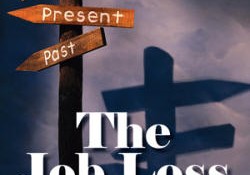In the past year, I’ve seen a dramatic increase in the number of mature workers being terminated by major employers, usually senior managers in their mid-40s to 50s.
Most are unable to get re-employed quickly at a similar level with another company in a similar sector. Instead, they are forced to consider some kind of career change. It’s a lot of trouble to go through.
But there is no going back to the way things were for these mature workers. All workers will simply have to get better at making career transitions as the pace of technological change accelerates over the next decade.
Actions to take
What actions, if any, help individuals make a career change? First and foremost is answering the questions: where and what? What other work are you suited for? Which organizations will recognize, reward, and motivate you? And what should you do there in terms of specific jobs or duties or responsibilities?
In other words, what is your job target? It’s pretty hard to hit a target unless you can see it. And this is where most people get bogged down because their career identity is so wrapped up in their most recent job or the path that they’ve followed with a specific company for 15 or more years. If they can’t find similar work elsewhere, they simply don’t know what to do.
However, most people do not answer these basic questions of where and what before starting a career change. Instead, studies show that they jump into networking, acquiring new knowledge and skills, trying things out, researching options, and self-reflection.
The trouble is…
Some of these activities are good, even necessary, but they often lead to a lot of wasted time and energy. Networking is not very productive if you can’t tell others what you are looking for. Acquiring new knowledge and skills is not very useful if they don’t align with your strengths and motivations to leverage them into a rewarding career. Trying things out might be fun but are they part of a strategy or tactic that leads to new employment? Researching options might be interesting but there are over 90,000 job titles operating in North America today, so which 1, 10, or 20 match your strengths and ambitions? And self-reflection can be self-defeating until it is tied to a purpose and a plan.
Less trouble
I’ve been helping individuals make career changes for over 30 years. My speciality is answering the questions Where and What for my clients. In my experience, it’s a lot less trouble if you start at the beginning with a target—one that expands opportunities and motivates you to take action.










